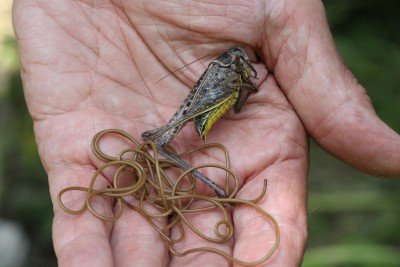
In rural wildlife rescue, identifying wolf worms is crucial for the well-being of local fauna. The good news? You don’t need to be a scientist to understand the signs or take action. With some basic knowledge and keen observation, anyone can help ensure the safety of these animals. So, let’s dive deeper into how to identify wolf worms, what they look like, and how to support wildlife rescue effectively.
What Are Wolf Worms?
Let’s start from the ground up. Wolf worms are actually **larvae** of particular species of flies, mainly from the family Oestridae. These flies lay their eggs on the skin or fur of animals, and when the eggs hatch, the larvae burrow into the host. This can cause pain and infection for the animal, much like how a splinter can irritate your skin.
The term “wolf worm” often refers to the larvae of the *Canis lupus* fly, which typically infects canines but can also affect other mammals. In rural areas, animals like foxes, wolves, and even domestic dogs may be at risk, especially if they roam freely in natural habitats. It’s this connection to wildlife rescue that makes understanding wolf worm identification so essential.
Signs of a Wolf Worm Infestation
You might be wondering, “How do I know if an animal has wolf worms?” Here are some common signs to look out for:
- Visible lumps or swelling on the skin
- Foul-smelling discharge around the affected area
- Persistent scratching or biting at the site
- Behavior changes, like lethargy or decreased appetite
If you notice something unusual, don’t panic. These signs are fairly obvious, but they can easily be mistaken for other skin conditions. It’s important to gather as much information as possible without jumping to conclusions. For instance, if you see a wild animal acting strangely, it could also be suffering from another health issue altogether.
How to Identify Wolf Worms Visually
Identifying wolf worms visually involves closely examining the infected area. If you spot a lump, carefully observe it. Here’s what to keep in mind:
– Look for **small breathing holes** on the surface of the skin. These holes indicate that a larva is present underneath.
– The larvae themselves can sometimes be seen if the wound is large enough. They tend to be **white or yellowish** and can move, which is quite a sight!
It’s often helpful to take a photo if you think you’ve identified a wolf worm. This can provide a clearer picture for wildlife rescuers when you report the issue.
Impacts on Wildlife Health
Wolf worm infestations can lead to serious health issues for affected animals. The larvae feed on the host’s tissues, which can result in secondary infections, pain, and even death if not treated. Think of it as an unwanted guest that overstays their welcome and starts eating all your food—eventually, something’s gotta give!
Furthermore, infestations can affect an animal’s ability to hunt, care for their young, or even escape from predators. This is especially critical in rural areas where competition for food and shelter is fierce. Healthy wildlife is essential for maintaining balanced ecosystems, and that’s where rescue efforts come into play.
How Wildlife Rescuers Handle Wolf Worm Cases
So, what happens once a wolf worm infestation is confirmed? Wildlife rescuers typically follow a series of steps:
1. **Assessment:** A trained professional will evaluate the extent of the infestation.
2. **Treatment:** Depending on the severity, treatment may include removing the larvae surgically or applying topical medications.
3. **Aftercare:** Animals often require follow-up care, including antibiotics to prevent infection.
This process not only helps the animal recover but also prevents the spread of the infestation to other local wildlife.
Preventing Wolf Worm Infestations
Preventing wolf worm infestations starts with being proactive. Here’s how you can help:
- Educate yourself and others about the signs of wolf worms.
- Support local wildlife rescues through donations or volunteering.
- Encourage responsible pet ownership to help reduce the risk of infestations in domestic animals.
Being vigilant is key. If you suspect a wild animal in your area might have wolf worms, notify local wildlife rescue organizations immediately. They can take action and assess the situation before it escalates.
Identifying wolf worms in rural wildlife isn’t just about preventing a single infestation; it’s a crucial part of maintaining healthy ecosystems and protecting our animal friends. Remember, you don’t have to be a wildlife expert to help! By staying informed and aware of the signs, you can play a vital role in wildlife rescue.
So, next time you’re out in nature or come across an injured animal, keep an eye out for those pesky wolf worms. Let’s work together to ensure that wildlife flourishes in our rural landscapes. Your keen observations could be the difference between life and death for an animal in need.
